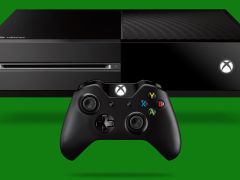Video Gamer is reader-supported. When you buy through links on our site, we may earn an affiliate commission. Prices subject to change. Learn more
For a long time I’ve accepted Microsoft’s rhetoric on the power of Xbox One. I’ve gone along with the talk about balance; I’ve acknowledged the promise of Cloud technology; and I’ve empathised with its frustration over the ongoing community backlash.
But now it’s difficult to be so forgiving.
With two of next-gen’s major launch titles performing noticeably better on PlayStation 4, now’s the time for the tough questions to be asked: why, given the £80 premium, has Microsoft failed to provide a machine capable of offering the same performance – a reasonable performance – as its rival? Why is Call of Duty: Ghosts – a game often ridiculed by the community for its underwhelming visuals – unable to render at native 1080p? And should those who have stuck with Microsoft through thick and thin over the last four months finally start to reconsider their purchase?
That final question is something I’ve been asking myself over the last few days, and has left me (and, I imagine, thousands of other similar-minded gamers) in an awkward situation heading into the next generation. As regular readers will know, Xbox 360 has been my predominant platform throughout the last cycle. The vast majority of my friends are on Xbox Live, I’ve always preferred Microsoft’s UI and controller, I’ve invested almost 10 years into its online service, and, well… the lure of the achievements keeps me coming back.
I was also fairly convinced that multiplatform titles on Xbox One and PS4 wouldn’t suffer from any major visual differences at launch. Getting a fully optimised title ready for a console launch is an enormously difficult task, of course, doubly so when there are two of them launching simultaneously. And as such, I wrongly presumed developers would aim for the lowest common denominator across both systems to get their title running stably and, quite frankly, to make their lives easier.
If Sony was ever to able to pull forward, I believed it would be later in the console’s life as developers ran into bottlenecks on Xbox One and managed to squeeze the extra ounce of power out of PS4’s GDDR5 RAM and impressive GPU.
Perhaps foolishly, I also believed Microsoft’s bullish claims about its machine’s capabilities.
“There is no way we’re giving up a 30%+ advantage to Sony,” said Albert Penello, Xbox’s senior director of marketing and planning, last month. “And ANYONE who has seen both systems running could say there are great looking games on both systems. If there was really huge performance difference – it would be obvious.”
He continued: “I get a ton of hate for saying this – but it’s been the same EVERY generation. Sony claims more power, they did it with Cell, they did it with Emotion Engine, and they are doing it again. And, in the end, games on our system looked the same or better.”
/https://oimg.videogamer.com/images/0640/xbox_one_3.jpg)
Penello’s words are a particularly agonising read now. The two games we’ve seen and heard about so far on Xbox One – the games that could arguably matter most to a huge portion of next-gen investors –do not look better on Microsoft’s console. They don’t even look the same, with PlayStation 4 displaying a significant advantage in pure pixel count. Based on early indications and an ill-advised aggressive commentary, Microsoft, frankly, appears to have dug its own grave.
This week’s revelations bring into question any last minute decisions over early next-gen investments. To those picking up both, on which platform should you pre-order Battlefield 4, Call of Duty: Ghosts, Watch Dogs or Assassin’s Creed 4? On the face of it, it seems an easy choice: just go for the option that provides the better-looking game.
After all, much of the buzz of a next-gen launch centres around being left dazzled by those sparkling graphics. But to many players, making the switch would be to throw away years of investment and trust in a particular product and service – a conundrum made considerably more difficult when the vast majority of their online friends could still be playing games like Call of Duty and Battlefield on the weaker platform.
I still put trust in Microsoft’s console offering the more appealing exclusives in the short term, and struggle to see how Knack, Killzone and DriveClub will manage to live up to Dead Rising, Titanfall and Forza.
But as we’ve seen with Wii U, getting a launch right can be vitally important to public perception, and once the idea that a machine less powerful than one almost £100 cheaper seeps into the mainstream, Microsoft may struggle to turn things around. And as developers grow more familiar with PlayStation 4’s hardware, there’s little reason not to believe that the differences between the two consoles could remain a constant.
Eight weeks ago, Microsoft’s Major Nelson said that he was “very much looking forward to the next few months (and beyond) as the truth comes out” about Xbox One. The truth is out there now, and it certainly isn’t pretty.
In the hours prior to the news about Call of Duty: Ghosts’ performance breaking, VideoGamer.com discussed the issue of next-gen’s native resolutions on Episode 35 of the VideoGamer UK Podcast. To hear the rest of the team’s thoughts on the issue, head through to our podcast page.
/https://oimg.videogamer.com/images/749c/battupnext.jpg)
